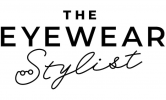How Do Anti-Ageing Glasses Work?
Anti-ageing lenses contain special lenses designed to block several kinds of light wavelengths which can accelerate ageing of both the eyes and the skin around them. To understand how they do this I need to get a little science-y for a second (but I promise I’ll keep it simple!)
We’re all aware of how the sun’s rays can prematurely age our skin without adequate protection. You’ll most likely have heard of UV light – which is perhaps better known as the one that gives us a tan! It does this by cutting through a shallow layer of our skin, influencing melanin and the colour within. But there are also a couple of other types of wavelengths to be aware of within sunlight – blue light, and near-infrared (BL and IR or NIR for short). We’ll come onto blue light in a second – but let’s concentrate for now on this lesser-known, but equally (if not more important) type of light.
Infrared light is often forgotten in the conversation surrounding the ageing effects of the sun’s rays – but it can be even more destructive. This is because infrared can be found absolutely everywhere – even indoors – and it cuts much deeper than UV or blue light, affecting the tissues and muscle beneath as well as the skin itself, causing loosening and loss of elasticity which eventually leads to wrinkles.


The Science of Anti-Ageing Glasses
The higher the number in nanometres, the higher energy and faster the wavelength frequency is. Lower wavelengths have smoother, slower frequencies but higher wavelengths are steeper and narrower, able to penetrate the skin more deeply.
UV = up to 400 nanometres – split into:
UV-A (315~380nm wavelength) – these are the UV-rays that effect the skin when exposed. The rays reach the ‘true skin’ beneath and cause wrinkles and sagging.
UV-B (280~315nm wavelength) -the UV-rays that effect the surface of the skin and within few hours makes the skin red. These rays accelerate the production of melanin.
Blue Light (scientifically correct name: High Energy Violet Light) = 380-400 nanometres.
Near Infrared Rays = 760-1400 nanometres.
As you can see, with infrared light the impact on the skin can be more than triple that of UV light. And when we break down sunlight into percentages, the ratio of IR is a whopping 50%, followed by 40% visible rays and just 10% UV.
What’s clever (and ground-breaking) about these anti-ageing lenses is that as well as absorbing UV light and blue light, they also absorb infrared too, preventing key signs of ageing developing around the eyes (such as wrinkles and dark circles) and preserving the health of the eyes themselves.
Let’s Get Started!
Get expert advice on what glasses and sunglasses will not only suit you but enhance how you look and feel. Styling sessions from just £99.

